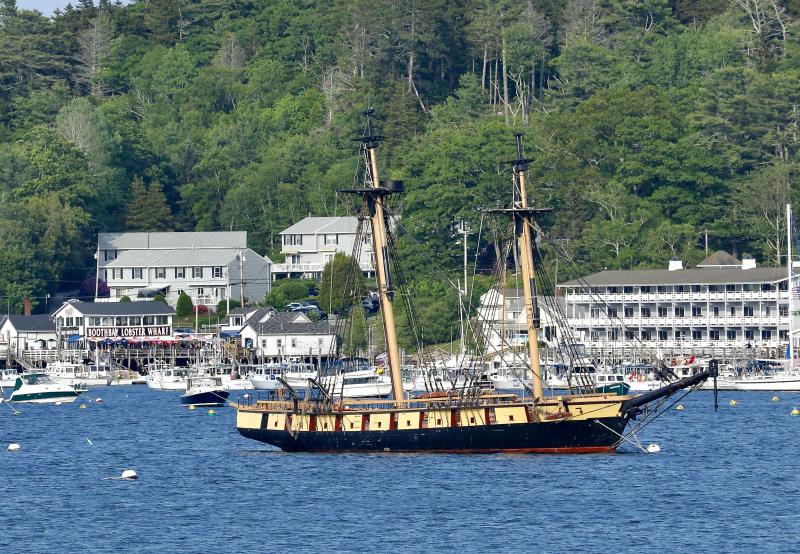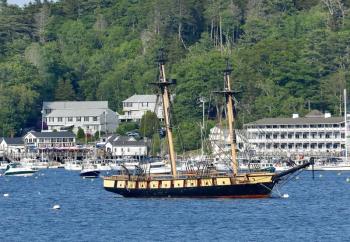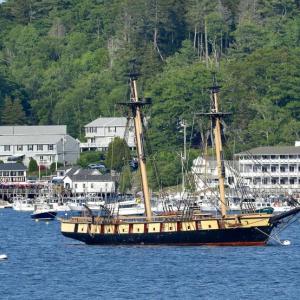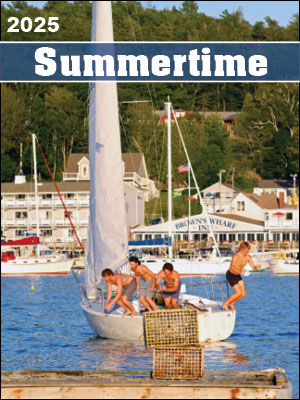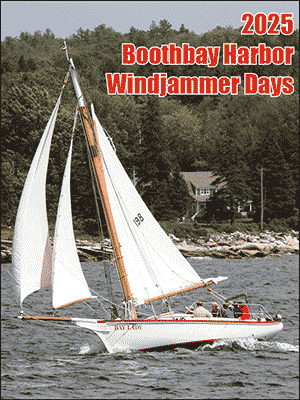The Brig Niagara
Next week, during our 63d edition of Windjammer Days, one of America's historic sailing vessels will cross our harbor. But this one will not be ferrying happy tourists.
She is the Niagara, a two-masted, 110-foot-long brig, square-rigged warship. On that day, Niagara is scheduled to sail about 300 yards from her harbor mooring to the Bristol Marine shipyard. Once hauled, she will begin a year-long, $5 million rebuild.
It will be the fourth rebuild for a vessel that once battled and bested the British not far from a Lake Erie Island called Put-In-Bay. That fight was on Sept. 10, 1813.
It was five days after another U.S. Navy brig, the USS Enterprise, defeated an English brig, the HMS Boxer, in a battle on a sunny Sunday afternoon, not far from Boothbay. Our local tradition holds that town residents watched that battle. Ironically, both Put-In-Bay and Boothbay are known today not as battle locations but as popular tourist attractions.
In the battle for control of Lake Erie, the Niagara was a powerful ship armed with carronades and two 2x12 long guns. During the skirmish, her Commander, Oliver Hazard Perry, took command of Niagara, bearing his flag, “Don’t give up the ship” (which he brought aboard after he gave up an earlier vessel) announced his victory by signaling to his superiors: “We have met the enemy and they are ours.”
Capt. Greg Bailey, the skipper of the 2025 version of Niagara, said this is the fourth time she was rebuilt. After the 1812 war, the Navy decided it didn't need a warship on Lake Erie, but some wanted to preserve her in case she was needed again, so they sunk her in an inlet near Erie, Pennsylvania named Misery Bay. In 1913, on the 100th anniversary of the battle, she was raised, rebuilt, sailed and forgotten. The Great Depression stymied the second rebuilding project in 1930. They finished that rebuild in 1963. In 1988, it was time for another rebuild, but there was not much left of the original craft and she was moored at Erie Maritime Museum and served as a historic artifact giving tours and sailing cruises.
Bailey, who has skippered other sailing vessels including the schooner Harvey Gamage, and his crew sailed the Niagara from Erie through the Welland Canal, into lake Ontario, up the St. Lawrence River, (after a couple days in Quebec) to the Atlantic, and finally down the coast to Boothbay. The 2,038-mile voyage took two weeks and five days.
How did the old girl do on the trip? Capt. Bailey said she was “pretty sturdy” although he admitted he was a bit nervous about her engine as, over the years, regular maintenance was a problem. Still, he said he found “There are some things that need to be taken care of.”
When taking her from her usual birth in Erie out to the sea, the 46-year-old skipper admitted he was very cautious and didn’t want to go into the North Atlantic when “she was blowing a holy- hooey.” He planned the voyage to include several hidey-holes where he could escape bad weather. They steered the elderly lady with a long tiller manned by two helmsmen, yet he said that rig was pretty responsive. “The pilots who came aboard were surprised how well she maneuvered,” he said.
Once on the Bristol Marine railway, yard general manager Dennis Gunderson said workers will open her bow to inspect any damage. “We will tear it open so we know what to do. Who knows what we will find?" said Capt. Bailey.
He said Bristol Marine won the contract through a competitive bidding project supervised by the Pennsylvania Commonwealth agency called the Pennsylvania Historical & Museum Commission. They asked several restoration yards to bid on the job, and Bristol won.
Having worked on ships owned by non-profit agencies, Bailey said it was nice to have sufficient funds to rebuild the craft, but said it was a bit of a learning curve to navigate the state (purchasing) rules. Once he learned the drill, he said he didn’t mind them, for he wanted to be careful of taxpayer money.
For the next year or so, as they did on their last historic ship rebuild, the schooner Ernestina Morrissey, the Bristol Marine yard workers will go step by step to restore one of the last veterans of the War of 1812, along with the frigate USS Constitution.
Not far from Boothbay, Bath Iron Works is crafting the mighty modern U.S. Navy destroyers packed with tons of electronic gizmos needed to defeat today's supersonic missiles and drones. The Brig Niagara is a reminder that, once upon a time, vessels sailing under canvas and firing clumsy cannons, our Navy’s sailors went into battle in wooden ships that relied upon maps and compass, along with ropes and pulleys, to fight the country’s enemy.
And they always prevailed.
Anchors Away.


